
Diskit Monastery : Worship, Wisdom, and Wonder
Table of Contents
ToggleOverview
In the heart of the serene valley of Nubra, Ladakh, Diskit Monastery remains among the most beautiful and spiritually uplifting gompas of northern India. It is an image of Buddhist life but also provides an absolute haven for a quiet retreat as well as to adventure with huge mountains on either side. In this blog, we’ll attempt to go into history regarding Diskit Monastery, show its importance to culture and architecture, and relate it to why it’s still very important today in showing its role in the spiritual landscape of Ladakh and other places.
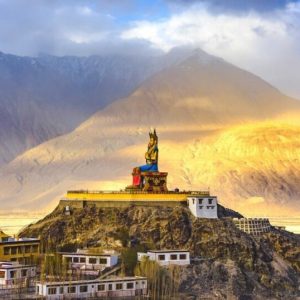
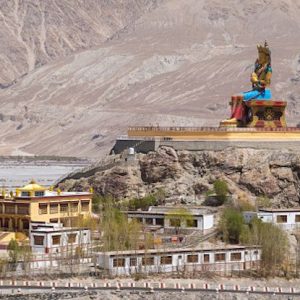
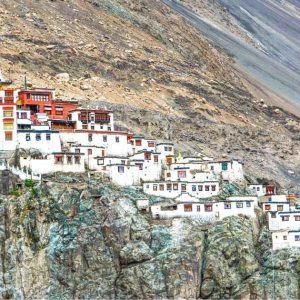


History of Diskit Monastery and Cultural Importance
Of the monasteries in Nubra Valley, Diskit Monastery is considered to be the oldest and largest. Its established date is considered to be the 14th century when it was founded by Changzem Tserab Zangpo, a Tibetan Buddhist scholar who was considered a disciple of Je Tsongkhapa, another famous Tibetan Buddhist scholar. This Tibetan Gelugpa sect is often termed the “Yellow Hat” sect focusing on meditation, monastic discipline, and scholastic learning.
The history of the Diskit Monastery goes very much with the spread of Buddhism in Ladakh and the political doings of that region. Historically, Ladakh was a very prosperous commercial center of Buddhism and trade between India, Tibet, and Central Asia. Monks from the Diskit monastery did not just act as custodians of religious practices but also served as go-between and movers in the political affairs of Ladakh. The place of settlement of their disputes sometimes would be the monastery, in order to keep the valley peaceful.
Much has changed over the centuries for Diskit Monastery, especially after it was invaded by a host of invaders in the region. However, with time, it has emerged as a banner of survival and a torch of spiritual learning. In fact, this monastery is inherently linked to the identity of the region and signifies an amalgam of Tibetan Buddhist traditions and the Ladakhi culture, in its own peculiar context.
Architecture and Layout of Diskit Monastery
It stands on a hill-top, commanding panoramic views of the valley below. At once stunning. The design of the monastery follows the traditional Tibetan monastic architecture that finds its epitome in a succession of buildings and shrines arranged in an order of things that takes on the character of sedate quiet contemplation.
Main Temple and Prayer Halls
The main temple of the complex is that of the Maitreya Buddha, called Future Buddha, because the statues already have observable features and are said to be about 32 feet tall. The most striking feature of Diskit Monastery is the gigantic, massive statue. The temple boasts the minute frescoes, murals, and statues of the various gods of Buddhism; while it can be applied for meditation, teachings, and mass prayers.
Giant Maitreya Statue
The most stunning feature and the most common you will see of Diskit Monastery is the freshly constructed enormous Maitreya Buddha, constructed just outside the complex overlooking Nubra Valley. Built in 2010, it features as part of an entire campaign geared towards promoting love and harmony in this bitterly culturally diverse area of Ladakh. Maitreya features kindness and friendship as the two most important aspects of Buddhist philosophy.
The Maitreya Buddha statue also represents the timelessness characteristic of the Buddhist doctrines inspiring people all around the world. Barely a few years since it was built, the monument proved to be the absolute favorite haunt for all travelers who sought a quiet spot for reflection and photography. This colossal statue, wearing this easy and peaceful smile, seems to guard the entire Nubra Valley, reminding one of the rich spiritual heritage which the region personifies.
The Monastery Complex
Narrow alleys and courtyards of the monastery complex go towards different shrines and rooms of prayer. Monks living in these monasteries are accommodated in modest rooms in the most isolated places within the complex. The murals and thangkas, being holy murals drawn following the traditional Tibetan school of Buddhism, and the prayer wheels are inside decorations for the monasteries.
You will also find some small shrines dotted around the monastery-in each of those shrines lies a different Buddhist god. They generally are not lit up to a great extent by the devotees who have placed incense, butter lamps and flowers as offering. Intricately painted on its walls is the life and teachings of the Buddha in shape.
Therefore, the monastery owns beautiful libraries with the oldest and most rare manuscripts in Buddhism. The texts are ideal material for students and scholars in the area who need to gain broad insight into the region’s philosophy of Buddhism. They date back to the 14th century, and this library is one of the most important assets of the community.
Spiritual Life and Practices at Diskit Monastery
Diskit Monastery is not a tourist destination. However, it remains alive as a center of Buddhism. Here, there is meditation, teaching, and performance of communal rituals by the Buddhist monastic community. They lead very strict daily rituals of prayer, meditation, and studying the Buddhist scriptures.
Among the very significant spiritual practices undertaken by the monks of Diskit Monastery is morning and evening meditation. In a calendar year, the monks of the monastery provide teachings as well as discourses on Buddhist philosophy, ethics, and ways of meditation. Many of the visitors to the monastery are motivated to attend those teachings where one can become enlightened about the key principles of Buddhism-the Four Noble Truths and the Eightfold Path.
With being considered as a medium for psychological cleansing and spiritual enlightenment, monks in Diskit Monastery take time for long hours of meditation on a regular basis. Serenity surrounds such a great place of a monastery constructed amidst such great settings, making it the perfect location for inner peace and for contemplation surrounding it. Diskit Monastery is one of the good locations for those people who want spirituality and spiritual development to mingle in the lives of the spiritual monk people who sit for long hours of the day in meditation.
Among the most notable attractions of Diskit Monastery are thousands of prayer flags and wheels. In the Tibetan Buddhist tradition, prayer flags are highly prized for delivering good energy and blessings to the surroundings. The fluttering winds carry prayers from Diskit Monastery heaven; they hold them against fluttering prayer flags.
Another center for spiritual practice in monasteries is the prayer wheel. A mantra is inscribed over each circle; the circles are spun, and it is believed that the result of the prayer would then be poured into the universe, where good fortune and spiritual merit would somehow be bestowed upon the worshipper. One can participate in this practice by coming to the monastery and spinning the set of circles installed; it is simple yet profound participation in the spiritual rhythm at the location.
How to Reach Diskit Monastery: Travel Instructions
Getting to Diskit Monastery through Ladakh is not an easy journey, however. But it would be a journey that easily made all the hustling and bustling worthwhile. Ladakh is very well connected to India in general because it has its biggest town, Leh, accessible not only by road but also in the air.
i. By Air: Diskit Monastery is about 120 kilometers from Leh Kushok Bakula Rimpochee Airport. From Delhi, Srinagar, and Mumbai, daily flights to Leh are available on all the major Indian cities. Once you reach Leh, you can rent a taxi or use transports locally available to head towards Nubra Valley, which is a car ride that will take about 4-5 hours from Leh.
ii. By Road: The region is generally known for gorgeous though difficult road links. The primary link to Nubra Valley and Diskit Monastery is Khardung La Pass. Khardung La is one of the highest motorable roads in the world. The pass is spectacular in its aesthetic beauty, where mountains and valleys viewed from here appear surreal. It is a big challenge due to a very arid and thin environment combined with much climbing but that’s an adventure in itself.
Off-roading routes of those considered an adventure for any enthusiastic off-roader: this is a bumpy winding road that takes one through dramatic landscapes once seen-not soon forgotten.
Tips from Locals
Acclimatizing for high altitude, one can visit Diskit Monastery before heading toward Nubra Valley.
The best season to visit Diskit Monastery is May and September, which is a summer month. The weather is just right and also accessible to ease.
During the Nubra Valley Tour, a tourist can also visit the other nearby attractions located around the area. A tourist can visit Sand Dunes at Hunder, Yarab Tso Lake, and also the sister gompa of the Deskit Monastery which is named as Hunder Monastery.
Cultural Significance and Relevance in the Modern Era of Diskit Monastery
Diskit Monastery is one of the most revered centers of Tibetan Buddhism in Ladakh today. Its importance is that it has played a great role in preserving the Buddhist heritage and culture of the region. It will continue to be a pilgrimage center, a seat of learning for monks, and an area of interest for tourists. This monastery has also of late started symbolizing peace and religious tolerance in the region.
The most visited place in Ladakh now presents Diskit Monastery, where one can feel the influx of modernity into tradition, with the increasing numbers of monks who are approachable and willing to initiate visitors into the lesson of the spirit of Buddhism. Key events, practices, and celebrations shape up the imperative function that the monastery undertakes for the local culture of people in Ladakh.
Conclusion
Diskit Monastery represents the glorious Ladakhi spiritual heritage. From the view in history and architecture to its practices, it promises insight into Tibetan Buddhist culture given to this world differently. For one seeking peace, contemplation, and bond with nature and spirituality, visit Diskit Monastery as a rare chance at serenity and beauty at one of Ladakh’s most revered landmarks.
People Also Ask
Where is Diskit Monastery located?
Diskit Monastery is located in the Nubra Valley, approximately 120 km north of Leh, in the Ladakh region of India.
What is Diskit Monastery famous for?
Diskit Monastery is famous for its 32-meter-high statue of Maitreya Buddha, which offers stunning views of the Nubra Valley.
When was Diskit Monastery built?
Diskit Monastery was built in the 14th century by Changzem Tserab Zangpo, a disciple of the Tibetan Buddhist scholar Atisha.
What is the spiritual significance of Diskit Monastery?
It is a major center of Tibetan Buddhism and belongs to the Gelugpa sect. The monastery is a place for meditation, teachings, and prayers.
What is the best time to visit Diskit Monastery?
The best time to visit is during the summer months, from May to September, when the weather is pleasant and roads are accessible.
How do I reach Diskit Monastery from Leh?
Diskit Monastery can be reached by road from Leh via the Khardung La Pass, one of the highest motorable roads in the world. The drive takes around 4-5 hours.
What is the altitude of Diskit Monastery?
Diskit Monastery is situated at an altitude of about 3,150 meters (10,300 feet) above sea level.
What is the significance of the Maitreya Buddha statue at Diskit?
The Maitreya Buddha statue is a symbol of peace and protection. It is believed to guard the region against invaders and disasters.
What are the opening hours of Diskit Monastery?
Diskit Monastery is generally open from early morning (around 7 AM) to late afternoon (around 6 PM). Hours may vary based on season and religious events.
Can I stay near Diskit Monastery?
Yes, there are several guesthouses, homestays, and campsites around the monastery that offer accommodations for tourists.
Are there any festivals celebrated at Diskit Monastery?
Yes, Diskit Monastery celebrates Buddhist festivals like Dosmoche and Ladakh Festival, where traditional dances, music, and rituals take place.
Is there an entrance fee to visit Diskit Monastery?
There is generally no entrance fee to visit Diskit Monastery, but donations are welcomed for its upkeep.
Is photography allowed inside Diskit Monastery?
Yes, photography is allowed in most areas of the monastery, but visitors should ask for permission before photographing monks or sacred artifacts.
What can I see inside Diskit Monastery?
Inside the monastery, you can explore prayer halls, Buddhist statues, murals, thangka paintings, and intricate architecture that reflects Tibetan Buddhist culture.
Can I interact with monks at Diskit Monastery?
Yes, visitors can interact with the monks, but it’s important to be respectful. Some monks may also offer teachings or insights into Buddhism.
How long should I spend at Diskit Monastery?
Most visitors spend around 1 to 2 hours at Diskit Monastery, depending on their interest in exploring the monastery, taking in the views, and interacting with the monks.
Are there any trekking routes around Diskit Monastery?
Yes, there are various trekking routes around the Nubra Valley, including treks to nearby monasteries like Hunder Monastery and the sand dunes in Hunder.
What is the Hunder Sand Dunes near Diskit Monastery?
The Hunder Sand Dunes are unique desert-like formations located near the Diskit Monastery. You can ride Bactrian camels and enjoy the scenic surroundings.
Can I do a road trip to Diskit Monastery?
Yes, a road trip from Leh to Diskit is highly recommended. The journey takes you through breathtaking landscapes and high mountain passes, including the famous Khardung La.
What is the local food like near Diskit Monastery?
The local food in Nubra Valley includes dishes like thukpa (noodle soup), momos (dumplings), and tsampa (roasted barley flour). You’ll also find a variety of Tibetan and Ladakhi cuisine.
What is the weather like at Diskit Monastery?
The weather at Diskit is cold and dry, with temperatures ranging from -20°C in winter to 20°C in summer. Winters can be harsh, and snow is common.
Can I visit Diskit Monastery in winter?
Yes, you can visit in winter, but it can be difficult to access due to heavy snowfall. Most tourist facilities are closed during the winter months, and the valley is quiet and serene.
What is the culture of the Nubra Valley like?
The culture of Nubra Valley is heavily influenced by Tibetan Buddhism. The people are warm, welcoming, and practice a blend of traditional Ladakhi and Tibetan customs.
Are there any other monasteries near Diskit?
Yes, other monasteries in the vicinity include the Hunder Monastery, Sumur Monastery, and Panamic Monastery, all of which offer unique spiritual experiences.
What are the nearby attractions to Diskit Monastery?
Nearby attractions include the Hunder Sand Dunes, the Maitreya Buddha statue, the local villages of Nubra Valley, and the hot springs at Panamic, as well as the Turtuk village near the Pakistan border.



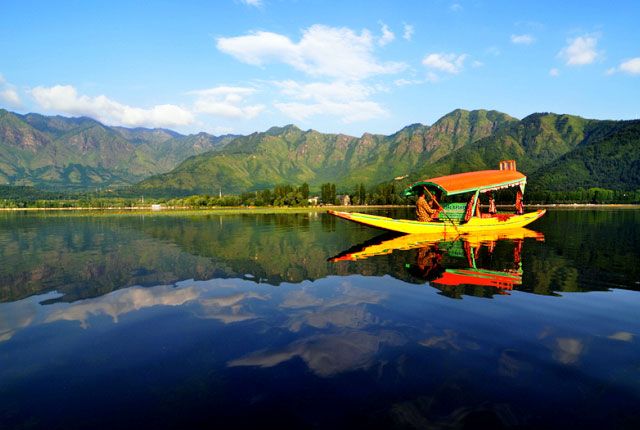
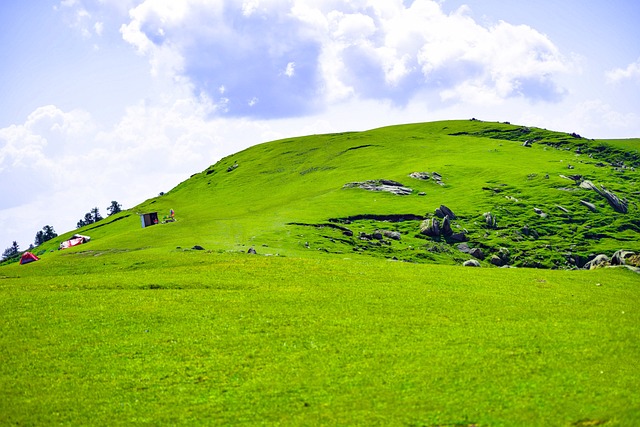
Our journey to Diskit Monastery with Golden Wheels Tour and Travels was nothing short of transformative. Nestled in the Nubra Valley, Diskit is a place where spirituality meets scenic wonder, and Golden Wheels crafted an experience that allowed us to feel both the majesty of the landscape and the serenity of the monastery.The tour was thoughtfully organized, with attention to every detail to ensure we enjoyed a smooth and enriching experience. Our guide, a true local expert, introduced us to the profound history and significance of the 14th-century monastery. Golden Wheels made it possible to witness the awe-inspiring statue of Maitreya Buddha up close, where the panoramic views of Nubra Valley added to the monastery’s aura of peace and wisdom.
Diskit Monastery is truly an awe-inspiring place, with its ancient spiritual significance and breathtaking views. The peaceful atmosphere and the towering statue of Maitreya Buddha were a highlight. Golden Wheels provided excellent service, making the journey smooth and comfortable. The experience was unforgettable!”
Visiting Diskit Monastery was a spiritual journey like no other. The tranquility of the place, combined with the stunning Himalayan views, made it a unique experience. Golden Wheels ensured everything was perfectly organized, with a knowledgeable guide who helped us understand the rich history and culture of the monastery. Highly recommended!”
The experience at Diskit Monastery exceeded all expectations. The views from the top were nothing short of spectacular, and the spiritual energy of the place was palpable. Golden Wheels’ services were exceptional, from smooth transportation to the well-informed guides. This trip was truly a blend of wisdom, worship, and wonder!”
Diskit Monastery is a place of great serenity, offering breathtaking views of the Nubra Valley and the iconic Maitreya Buddha statue. Golden Wheels made the trip hassle-free, with excellent transportation, a fantastic guide, and all the arrangements taken care of. This was an unforgettable part of my Ladakh trip!
I had the privilege of visiting Diskit Monastery with Golden Wheels, and it was a truly enriching experience. The monastery’s ancient architecture and stunning views were incredible, and our guide provided insightful stories about its history. Golden Wheels’ attention to detail made the whole experience even more special.”
Diskit Monastery is a hidden gem in Ladakh. The moment you step inside, you are surrounded by peace and spiritual energy. The views over the Nubra Valley are simply breathtaking. Golden Wheels made sure we had a comfortable ride, excellent local insights, and a memorable visit. Highly recommended!”
The visit to Diskit Monastery was a truly spiritual experience. The ancient history, combined with the serene atmosphere, made it a unique destination. Golden Wheels’ service was top-notch, providing us with a smooth journey and an insightful guide. It was definitely one of the highlights of our trip to Ladakh!”
Diskit Monastery is a place that takes your breath away – the majestic Buddha statue and the peaceful surroundings are perfect for reflection and peace. Golden Wheels did an excellent job in arranging everything, from a comfortable ride to a knowledgeable guide. I left feeling both spiritually and visually enriched!”